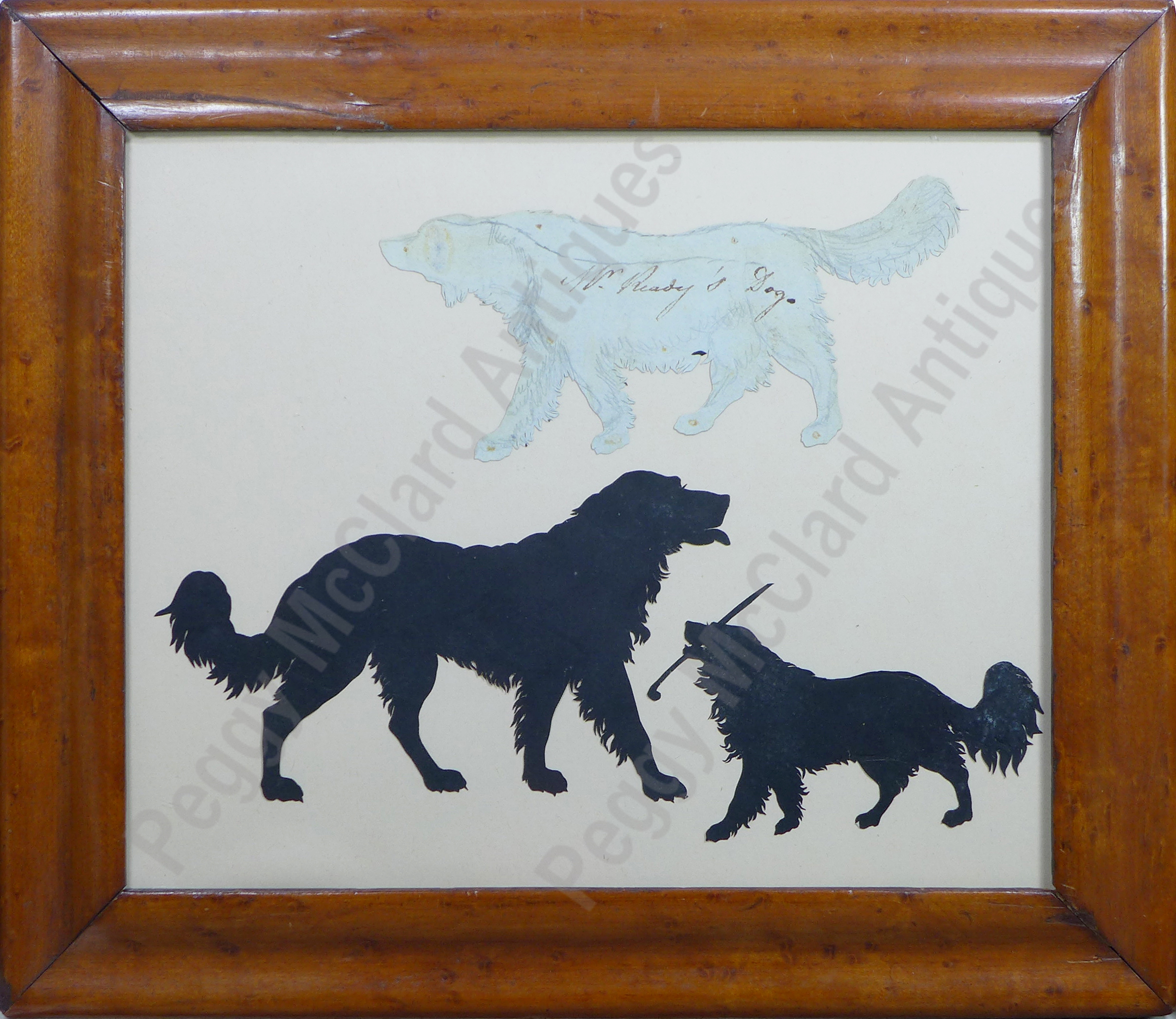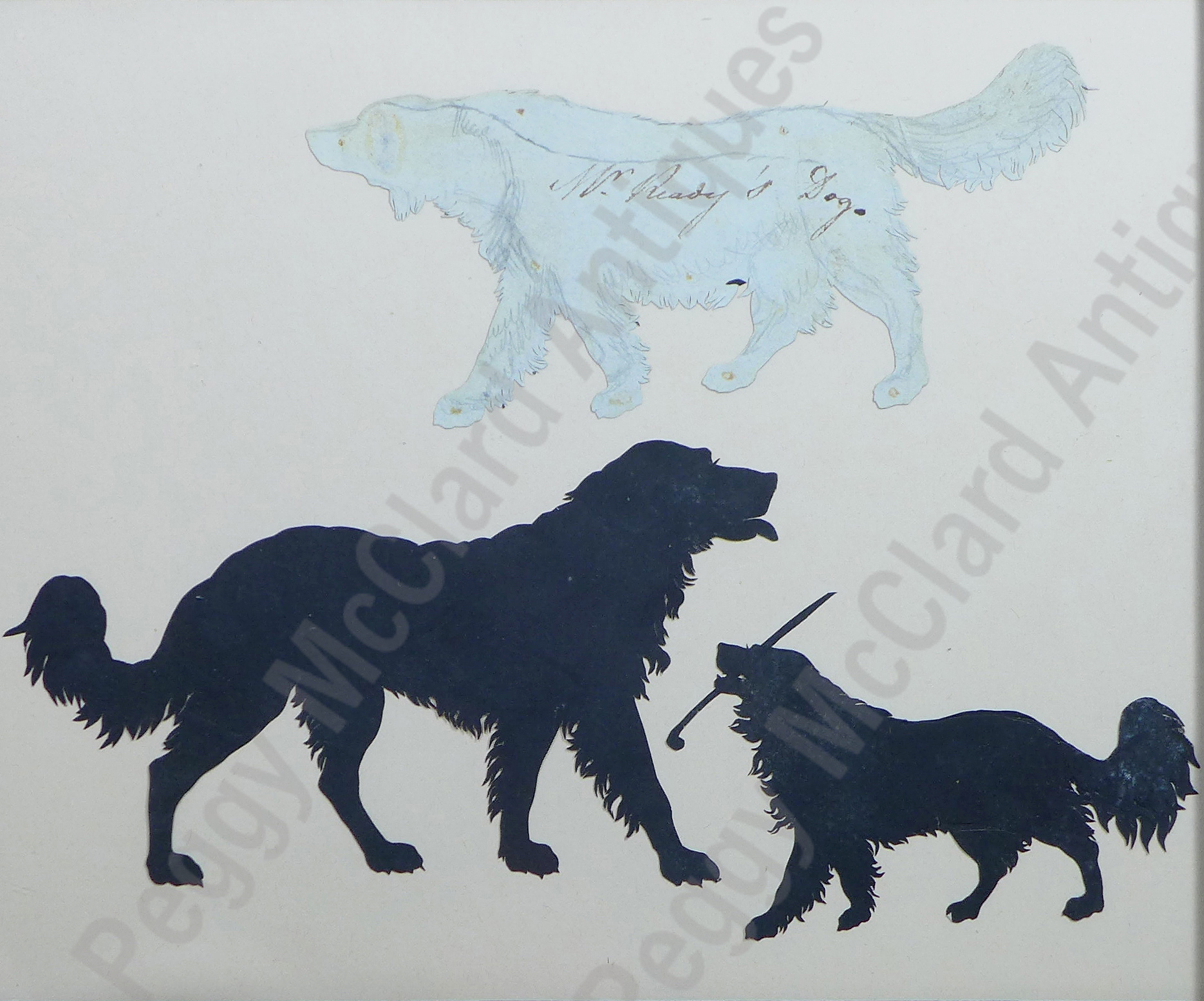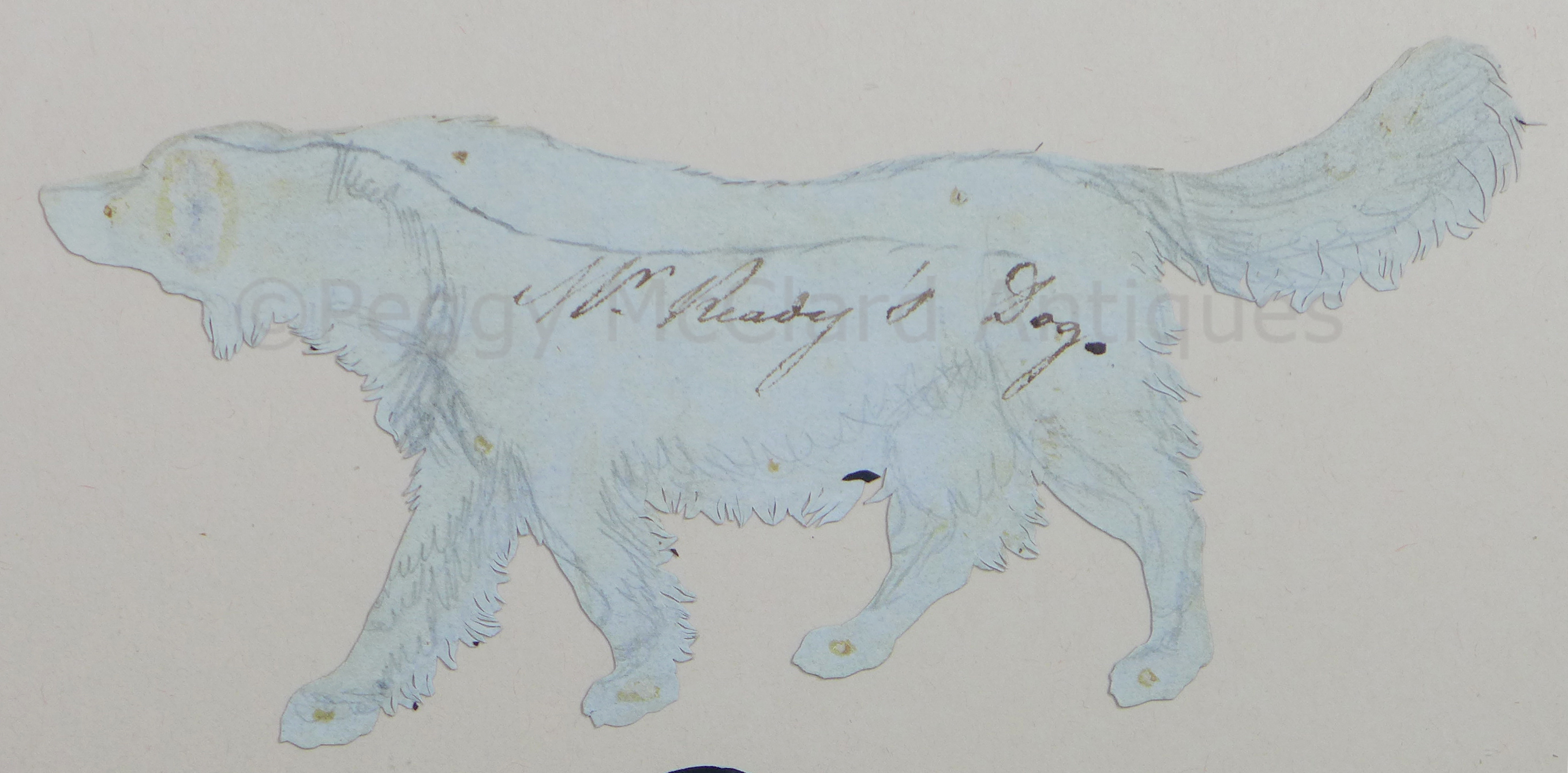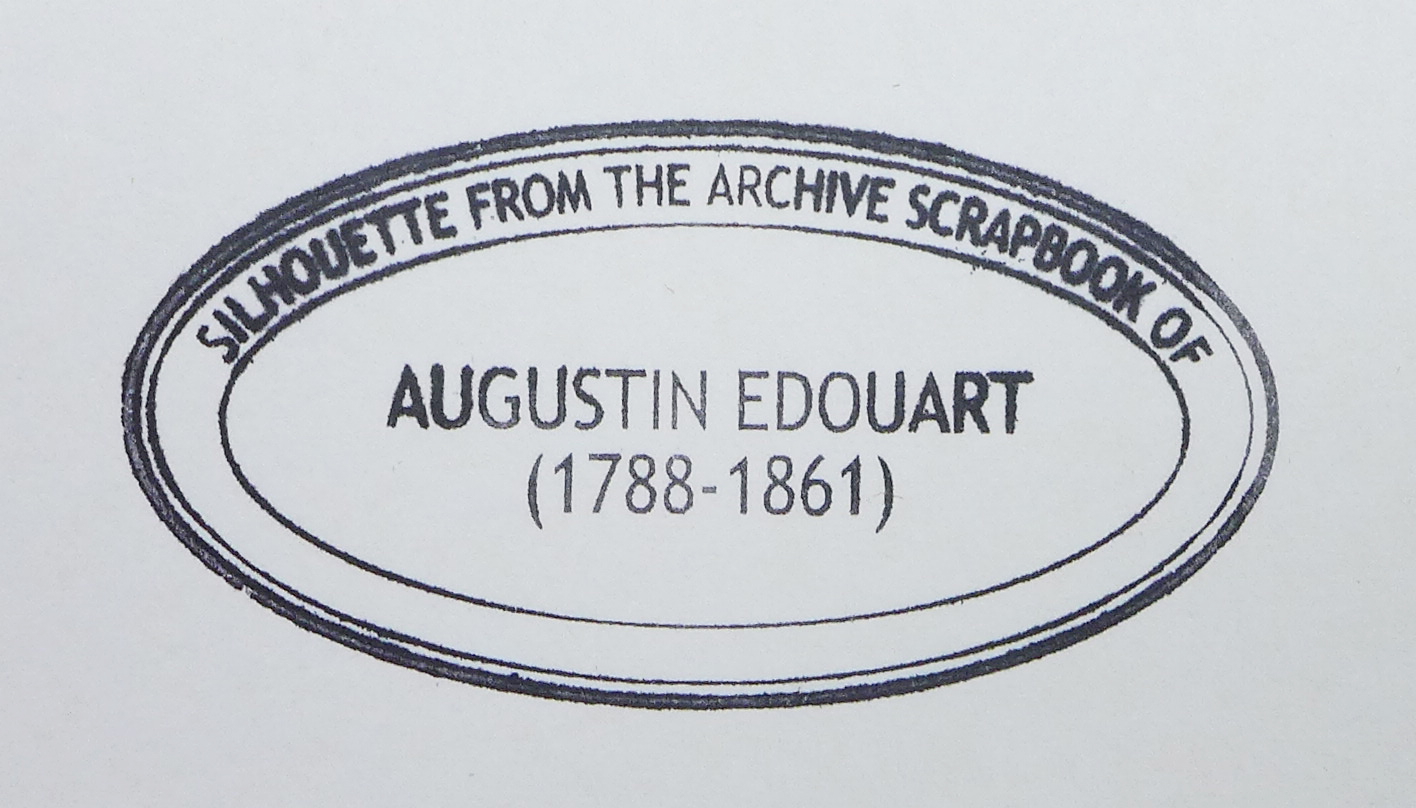
The dogs that I will be listing over the next year or two offer you a important opportunity to own silhouettes out of a folio that Mrs. Jackson referred to as an album of “Edouart’s genre pictures”. This genre album has long been off the market but recently surfaced and I have been lucky enough to purchase a number of figures removed from it. The album appears to have been Edouart’s personal book where he practiced figures and poses that he felt compelled to cut for his own edification. The figures from this album are of varying sizes, unlike the strict “military standard” which he used from 1827 with figures 7 ½” to 8” or less, depending on the height of his sitter. Mrs. Jackson noted that Edouart used this “military standard” from 1827 until the end of his career “except with his miniature work.” The miniature work to which she referred was saved exclusively by Edouart in this album or used for the exhibition he discusses in his own Treatise.
Offered here are three dogs of a very large shaggy working breed. I believe them to be Kuvasz but they may be earlier specimens of Newfoundland or Great Pyranees. I love to study the differences between these three dogs, and I do believe them to be 3 different specimens of the same or similar breed. The largest seems to be a bit longer-legged as its torso is proportionately higher off the ground. This large one’s tail is not as busy as the other two and the feathering of hair on his front legs not so full as his companions. Don’t you love his eyelash and tongue out?! The smallest is fabulous as he carries his master’s cane! I’ve framed the topmost dog so that the reverse shows so you can see that Edouart has labeled him “Mr. Ready’s dog.”. Unfortunately, I have not found a “Ready” amongst Mrs. Jackson’s list of sitters—but there have been more folios discovered since she collected them and there were many lost to the sea. We may never know whether Edouart was depicting a dog that he needed to cut for a commissioned silhouette or whether this handsome represented a friend or neighbor’s best friend and Edouart seized the opportunity to work on a new form. The reverse of this shade also exhibits Edouart’s doodling, an addition that he seldom used and was perhaps a way of looking at a new form as he contemplated whether he had captured it as he wanted. You can view another of his sketched backs in the Laughons’ A Quaker Album at 5. I’ve framed these pups in a period bird’s-eye maple frame behind early glass. The frame has some veneer loss on the outside edge. I’ve gently mounted the dogs with tiny hinges of Japanese rice tape to a cream-colored acid-free paper which is laid to an acid-free ragboard. On the back of the ragboard we are putting a stamp to authenticate all of these silhouettes as from The Archive Scrapbook of Augustin Edouart. If you want further provenance, I’m happy to add my own collection stamp at your request. These silhouettes will be so desirable in the future and you will be happy to have this authentication. Framed size 12 ½” x 10 3/8”. The largest of the dogs is 3 ½” tall and the smallest 3” (including the cane in his mouth). The dog on the lower right bit of white spotting on the tail from the time it spent on the bottom of Guernsey Bay. This is not distracting. Circa 1826-1845.
#5889 Sold
References:
Edouart, Augustin, A Treatise on Silhouette Likenesses, Longman & Co., Paternoster-Row; and J. Bolster, Patrick-Street, Cork, 1835.
Jackson, Mrs. E. Nevill, Silhouettes A History and Dictionary of Artists, Dover Publications, Inc., New York, 1981 (published as an unabridged republication of Jackson’s Silhouette: Notes and Dictionary, Methuen & Co. Ltd, 1938), at 98-99.
Laughon, Helen & Nel, August Edouart A Quaker Album: American and English Duplicate Silhouettes 1827-1845, Cheswick Press, Richmond, VA 1987 at 5.
Please see the Silhouettist Bios page for more information about Edouart.



